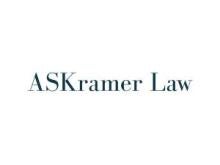When must a hedge be identified and accounted for tax purposes?
Taxpayers must identity each hedging transaction and the item it hedges. A taxpayer must clearly identify a hedging transaction “before the close of the day on which it was acquired, originated, or entered into”[1]; identify the hedged item on a “substantially contemporaneous”[2] basis with the identification of the hedge; and account for income or loss on the hedge using a tax accounting method that “clearly reflects income.”[3] The rules are essentially the same when recycling an existing hedging transaction.[4] The hedged item (or items) as well as the type of risk (or risks) being hedged must be identified on a substantially contemporaneous basis after the hedge is entered into. The substantially contemporaneous basis requirement is limited, however, because the hedged item must be identified not more than 35 days after the hedge is entered into.[5] This means that although hedges must be identified on the same day, taxpayers have an ability to identify hedged items on a substantially contemporaneous basis. As a practical matter, we always advise our clients to identify all of their hedges and hedged items on the day the hedge is entered into.
Hedge identifications must be unambiguous and made on and retained as part of the taxpayer’s books and records. Identification as a hedge for financial accounting or for other regulatory purposes does not meet the tax requirements unless the transaction is also unambiguously identified as a tax hedge.
Why might a taxpayer fail to identify a hedging transaction in a timely way?
There are many reasons why a taxpayer might not make a correct or timely identification of a tax hedge. Mistakes and errors happen—and they are more likely to happen if a taxpayer is not fully aware of the tax hedge requirements. Intended tax identifications can slip through the cracks. Sometimes an employee who is responsible for making the proper hedge identifications leaves the company and these responsibilities are not promptly reassigned. To encourage timely and accurate identification of hedging transactions, the Code imposes “whipsaw rules” that can result in ordinary income on gain transactions and capital losses on loss transactions.[6]
What if the taxpayer inadvertently fails to make a proper and timely hedge identification?
If a taxpayer fails to make a timely and proper hedge identification, the taxpayer cannot rely on Code § 1221(a)(7) for any default assumption that the associated hedging activity will be taxed as ordinary income or loss. Failure to properly identify a transaction does not mean the transaction automatically generates capital gain or loss. It can receive ordinary income treatment if three conditions are met. First, the transaction meets the definition of a tax hedge under Code § 1221(b)(2) and as defined in Treas. Reg. § 1.1221-2(b). Second, the taxpayer’s failure to properly identify the transaction was due to “inadvertent error.” Third, all of the taxpayer’s hedging transactions in open tax years are properly reported as tax hedges on original (or amended) tax returns.[7] The “whipsaw rules” might apply if these three conditions are not met. The tax accounting requirements at Treas. Reg. § 1.446-4 still apply for hedges that are not properly identified. Whether identified or not, a taxpayer must adopt a tax accounting method for its hedges that clearly reflects its income.
What are the whipsaw rules?
The IRS can apply the whipsaw rules if the taxpayer does not identify a qualified tax hedge on a timely basis. That is, if a qualified tax hedge is not properly identified and the failure to identify is not due to an inadvertent error, the transaction is subject to the whipsaw rules.[8] If a taxpayer fails to timely identify an otherwise-qualified hedge, or the taxpayer improperly identifies a transaction as a tax hedge when it is not a tax hedge, the transaction generates ordinary income. With respect to a loss, however, tax character is determined without regard to Code §§ 1221(a)(7) and 1221(b)(2) as if the transaction qualified as a tax hedge if it had been properly identified. As a result, the whipsaw rules apply without regard to whether a transaction acts as a hedge or otherwise serves as a form of “insurance.”
What must a taxpayer prove to show that a failure to identify a hedge was due to inadvertent error?
Neither the Code nor the Treasury Regulations define the term “inadvertent error.” All we have got to go on is one private letter ruling (PLR) and two Chief Counsel Advice Memoranda (CCAs). Neither PLRs or CCAs are the type of guidance that a taxpayer can rely on, or cite as legal “precedent.” They are instructive, nevertheless, because they show us how the IRS views claims of inadvertent error.
In PLR 200051035, the IRS said that “In the absence of a specific definition in the regulations, the term ‘inadvertent error’ should be given its ordinary meaning,” with the ordinary meaning of “inadvertence” being “an accidental oversight; a result of carelessness.”[9] This definition seems sensible and appropriate.[10] Eight years later, in CCA 200851082, the IRS stated that the “Taxpayer should bear the burden of proving inadvertence, and its satisfaction should be judged on all surrounding facts and objective indicia of whether the claimed oversight was truly accidental. The size of the transaction, the treatment of the transaction as a hedge for financial accounting purposes, the sophistication of the taxpayer, its advisors, and counterparties, among other things, are all probative.”[11] Fair enough.
Shortly thereafter, however, in CCA 201046015,[12] the IRS stated that if a taxpayer failed to promptly address an improperly identified hedge, this would undercut the taxpayer’s inadvertent error claim. The IRS asserted that the inadvertent error exception is not intended to “eviscerate” the hedge identification requirements. “Absent a change in the regulation, [the IRS saw] no compelling policy justification to read the inadvertent error rule as an open-ended invitation for taxpayers to brush aside establishing hedge identification procedures.” Ignorance of the hedge identification requirement “or even unsound judgment” is no excuse and is not grounds for claiming inadvertent error. In other words, inattention to the hedge identification requirements cannot be excused simply by asserting inadvertent error. As a result, taxpayers have little chance that they will be able to successfully assert inadvertent error. The taxpayer must carefully develop the facts and circumstances surrounding its failure to properly identify the transactions.
What if a taxpayer improperly identifies a non-qualifying transaction as a tax hedge?
If a transaction is not a tax hedge but the taxpayer improperly identified it as a tax hedge, the IRS can apply the whipsaw rules to treat gains as ordinary. Losses, on the other hand, would retain the tax character that would otherwise apply to them without applying the hedging rules. This means that a taxpayer can receive ordinary income on gain transactions and capital losses on loss transactions. To avoid such a situation, a taxpayer should regularly review its identification and documentation procedures to determine whether its transactions are properly identified, and to see if there have been changes in its hedging activities that should be reflected in updated documents.
What happens if a taxpayer has no reasonable grounds for failing to identify a transaction that qualifies as a tax hedge?
An anti-abuse rule provides that gain on an unidentified hedge is taxed as ordinary income.[13]
Must a taxpayer tie a particular hedge to a particular hedged item or items?
No. Although a taxpayer can specifically identify each individual hedge and match it to the item that is being hedged, the taxpayer can establish a system of “aggregate identification” for its business risks hedged on an aggregate or portfolio basis. Aggregate hedge programs can be established when hedging particular assets or liabilities (or groups of assets or liabilities) are reasonably expected to reduce a taxpayer’s overall operational risk exposure.[14]
How does a taxpayer identify hedges under an aggregate tax hedge program?
A business would need to adopt an aggregate hedging program when it cannot specifically identify each hedge and tie it to a specific hedged item or items. A taxpayer can hedge its price risk, interest rate risk, and currency risk on an aggregate basis as long as its hedges are properly identified and tax accounted for to clearly reflect income. A taxpayer that adopts an aggregate tax hedge program (Aggregate Program) must set out a description of the Aggregate Program in its tax books and records, and it must establish a system under which its individual hedging transactions are entered into pursuant to the Aggregate Program.[15] The Aggregate Program must describe the risk being hedged and the program under which the hedge is entered into.[16] It must include an identification of the type of risk being hedged; a description of the types of items giving rise to the risk being aggregated; provide sufficient additional information to demonstrate that the program is designed to reduce aggregate risk of the type identified; and explain any controls on speculation, their establishment, communication, and implementation.[17] All but a de minimis amount of the aggregate amount being hedged must be with respect to ordinary property, ordinary obligations, or borrowings.[18] This means that an Aggregate Program need not demonstrate that each and every hedged item relates to ordinary property, ordinary obligations, or borrowings as long as the amount is de minimis.
[1] Code § 1221(a)(7).
[2] Treas. Reg. § 1.1221-2(f)(2).
[3] 3 Treas. Reg. § 1.446-4.
[4] Treas. Reg. § 1.1221-2(f)(1).
[5] Treas. Reg. § 1.1221-2(f)(2).
[6] Code § 1221(b)(2)(B).
[7] Treas. Reg. § 1.1221-2(g)(1)(ii).
[8] Code § 1221(b)(2)(B).
[9] Dec. 22, 2000.
[10] Black’s Law Dictionary 762 (7th ed. 1999).
[11] CCA 200851082 (2008).
[12] CCA 201046015 (2010).
[13] Treas. Reg. § 1.1221-2(g)(2)(iii).
[14] Treas. Reg. § 1.1221-2(d)(1)(ii)(A).
[15] Treas. Reg. § 1.1221-2(f)(3)(iv).
[16] Treas. Reg. § 1.1221-2(f)(3)(iv)(A).
[17] Treas. Reg. § 1.1221-2(f)(3)(iv)(B).
[18] Treas. Reg. § 1.1221-2(c)(3).




 />i
/>i

